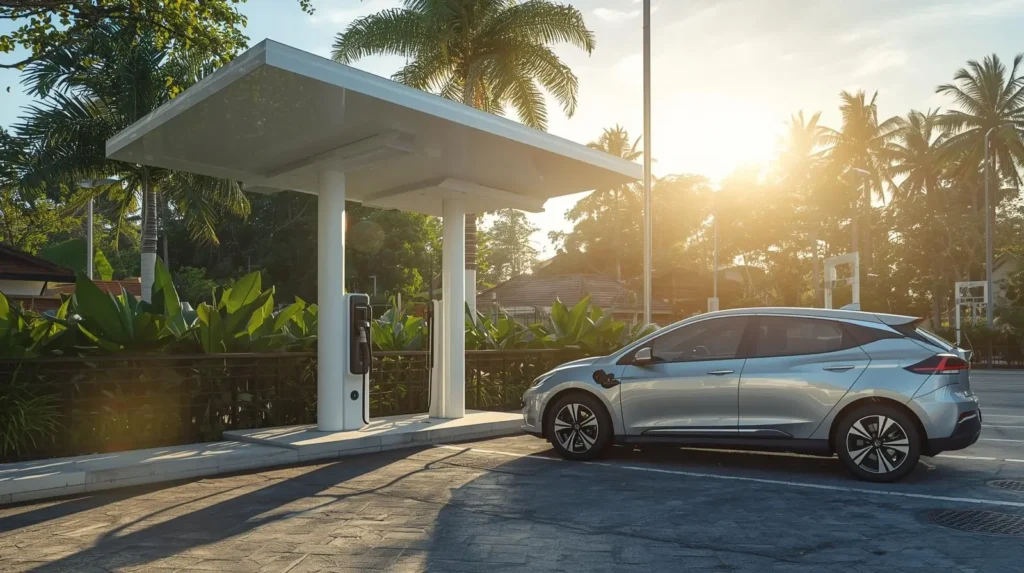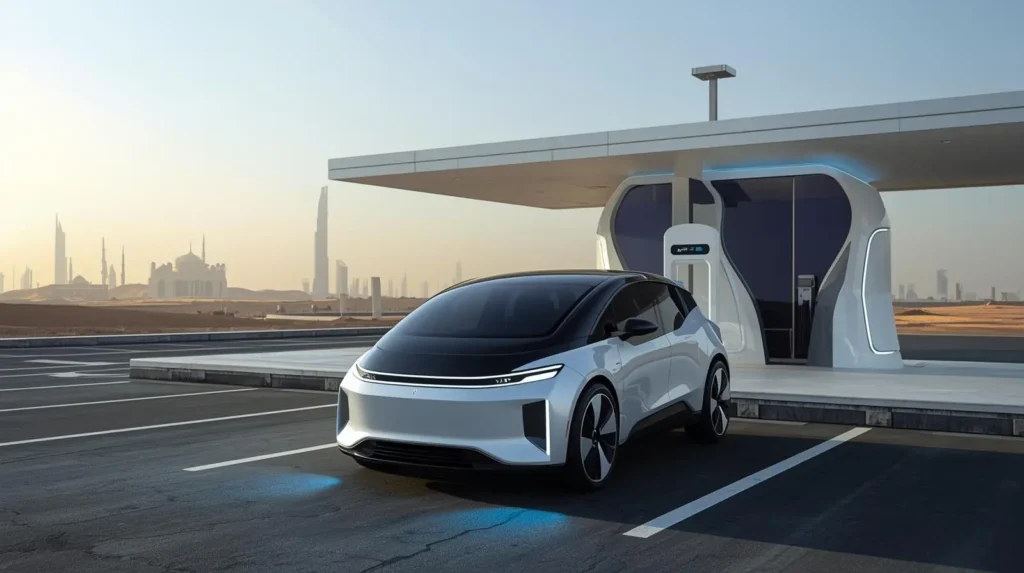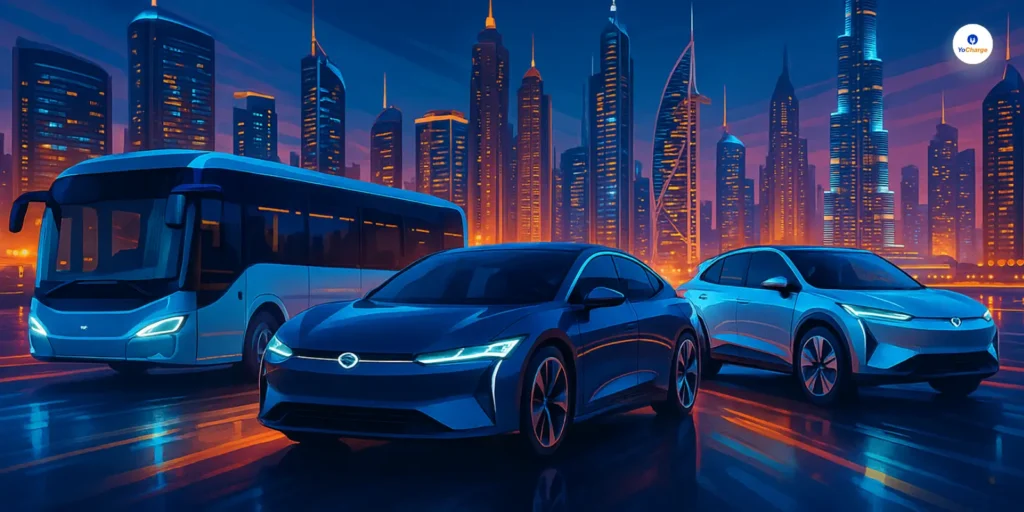
Imagine never having to worry about plugging in your electric vehicle (EV) again. Just park, walk away, and let your electric vehicle charge. This is the promise of wireless EV charging—a technology that is already making waves in Europe and Asia and is set to transform the way we power our cars in the U.S.
With the global market for wireless EV charging systems expected to exceed $825 million by 2027, this innovation is more than just a futuristic concept; it is a rapidly approaching reality. But how does it work, and what makes it so promising?
In this article, we will explore how wireless EV charging works, its features, benefits, and its status in the U.S.
What is Wireless EV Charging?
Wireless EV charging allows electric vehicles to charge without physical connections. It uses resonant electromagnetic induction to transmit electrical current. This technology is also called inductive charging. The charger and the vehicle both contain magnetic coils. When aligned, these coils create a magnetic field that transfers energy wirelessly. This method of charging is as efficient and fast as using a plug.
Types of Wireless EV Charging
There are two main types of wireless electric vehicle charging:
- Static Wireless Charging
- Dynamic Wireless Charging
Static Wireless Charging
Static wireless charging occurs when the vehicle is stationary. The vehicle is parked over a charging pad, and the charging process begins automatically. This method is similar to how most EV owners charge their vehicles today, except there’s no need for a cable.
Dynamic Wireless Charging
Dynamic wireless charging happens while the vehicle is in motion. This method involves embedding charging pads into roadways. As the vehicle drives over these pads, it charges continuously. This technology could allow EVs to travel long distances without needing to stop for a charge.
Although promising, dynamic wireless charging is still in its early stages and involves high infrastructure costs.
How Does Wireless EV Charging Works?
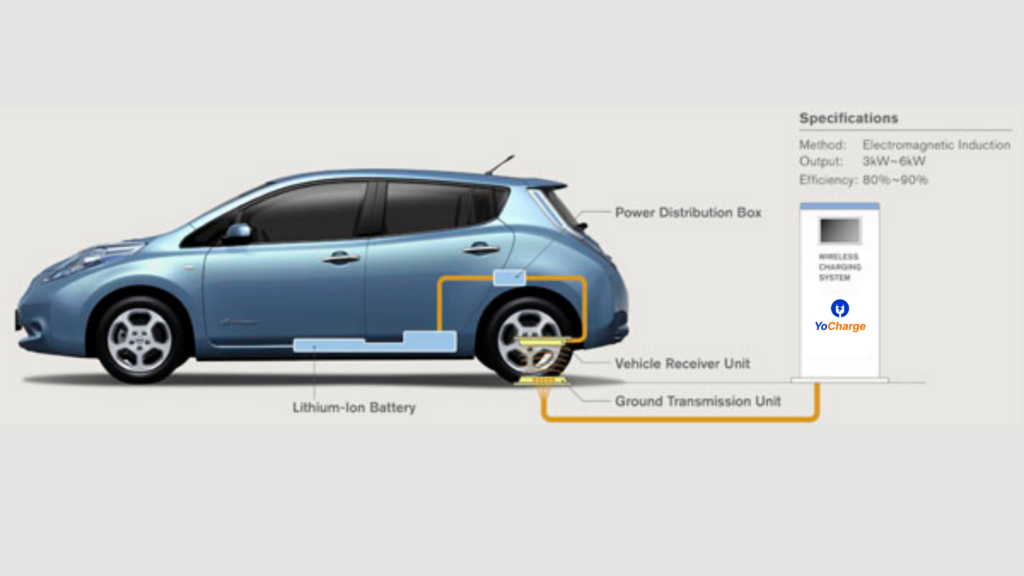
Wireless electric vehicle (EV) charging works through a process called inductive charging. It uses electromagnetic fields to transfer energy between two coils—one in the ground’s charging pad and the other in the vehicle. Here is a step-by-step explanation of how this technology works:
Step 1: Installation of Charging Infrastructure
- Charging Pad Setup: A charging pad is placed on the ground, either in a parking space or embedded in roadways. This pad contains a primary coil that creates a magnetic field when activated.
- Connection to Power Source: The charging pad connects to an electronics cabinet. This cabinet converts standard AC power from the grid into high-frequency AC power, making inductive charging efficient.
Step 2: Vehicle Preparation
- Receiver Coil Integration: The EV has a secondary coil (receiver coil) installed on its underside. This coil captures the magnetic field generated by the charging pad.
- Electronics Module: The vehicle also has an electronics module that converts the captured energy from AC to DC, which charges the vehicle’s battery.
Step 3: Alignment of Vehicle and Charging Pad
- Parking Over the Pad: The driver parks the vehicle over the charging pad. Proper alignment is key for efficient energy transfer, but systems can handle slight misalignments.
- Automatic Recognition: Some systems automatically detect when a vehicle is parked over the pad and starts charging without manual action.
Step 4: Energy Transfer Initiation
- Magnetic Field Generation: When the vehicle is correctly aligned, the charging pad activates and creates a magnetic field through the primary coil.
- Inductive Coupling: This magnetic field induces an electric current in the vehicle’s receiver coil. This process is known as resonant inductive coupling, where both coils match frequencies for optimal energy transfer.
Step 5: Charging the Vehicle
- Conversion of Energy: The induced current in the receiver coil is converted from AC to DC by the vehicle’s electronics module. This DC power charges the EV’s battery.
- Monitoring and Control: The system continuously monitors the charging process for efficiency and safety, adjusting power levels based on the battery’s charge level.
Step 6: Completion of Charging
- Automatic Shutoff: Once the battery is fully charged, the system automatically stops the energy transfer, preventing overcharging.
- Driver Notification: Many systems notify the driver when charging is complete and the vehicle can be moved.
Key Components of Wireless EV Charging Systems
The wireless EV charging system operates based on the principle of resonant inductive coupling, where the transmitter and receiver coils are tuned to the same resonant frequency for maximum power transfer efficiency. This wireless EV charging system includes several key components such as:

1. Wall Box (Power Supply Unit)
- Houses the high-power electronics that convert grid supply to high-frequency energy.
- Includes MOSFETs, inverters, and control circuitry
- Delivers the high-frequency energy to the charging pad
2. Ground Assembly: Charging Pad
- Installed on the ground, either on-surface or in-ground. This is also called as Active Pad.
- Generates the magnetic field for power transfer to the vehicle.
- Contains the primary coil that generates the magnetic field for power transmission
- Includes ferrite, shielding, and resonant matching network
- Converts high-frequency energy from the wall box into a magnetic field
3. Vehicle Assembly: Receiver Coil
- Installed on the underside of the EV. This is also referred to as Passive Pad.
- Receives the magnetic field from the charging pad. Contains the secondary coil that captures the energy from the magnetic field
- Needs to be aligned with the transmitter coil for efficient power transfer.
- Converts the received energy to direct current for charging the EV battery.
4. Communication Systems
- Communication systems allow the vehicle and charging pad to exchange information.
- This communication ensures that charging starts and stops at the right time.
- It also monitors the charging process, ensuring safety and efficiency.
Advantages of Using Wireless EV Charging Over Conventional Plug-in Charging?
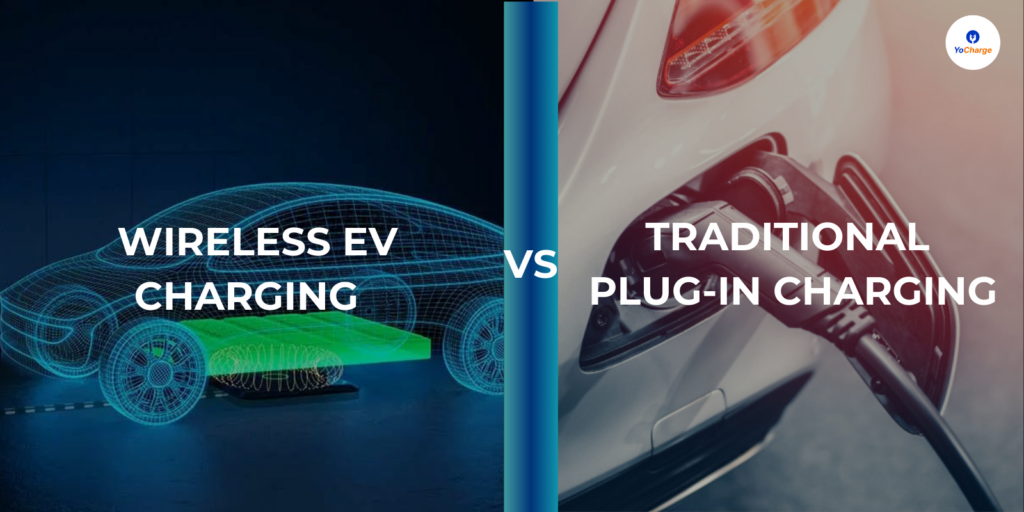
Wireless EV charging offers several advantages over traditional plug-in charging methods. It makes better user experience and efficiency of electric vehicle (EV) charging. Here are the key benefits:
Convenience
No Physical Cable: Wireless charging removes the need for heavy cables and connectors. Drivers can charge their EVs by simply parking over a charging pad. Charging begins automatically, making the process easier and eliminating the hassle of plugging in and unplugging.
Time-Saving: Charging times are similar to traditional methods, but wireless charging saves time. You don’t need to leave your vehicle to connect cables, which is especially helpful in bad weather.
Safety
Reduced Risk of Accidents: With no exposed cables, there is less chance of tripping hazards and electrical accidents. This is especially important in public charging areas where many people are around.
Reduced Wear and Tear
Longevity of Equipment: Since there are no physical connections, there’s less wear and tear on the charging infrastructure and the vehicle’s charging port. This reduces maintenance costs and increases the lifespan of both components.
Increased Adoption of EVs
Alleviating Range Anxiety: Wireless charging can encourage more people to switch to electric vehicles. It simplifies the charging process and reduces range anxiety about finding an EV charging station.
Potential for Autonomous Charging
Integration with Autonomous Vehicles: Wireless charging is ideal for autonomous electric vehicles. These vehicles can charge automatically without human help, making operations smoother for fleets like taxis and delivery vehicles.
Interoperability and User Experience
Simplified Charging Process: Users don’t need to deal with different connectors or interfaces. The system automatically recognizes the vehicle and starts charging when it’s aligned over the pad.
Dynamic Charging Possibilities
Future Innovations: While most systems are currently static, dynamic charging is being explored. This could allow vehicles to charge while in motion, changing how EVs are powered on the go.
Challenges and Limitations of Wireless Electric Vehicle Charging
Wireless electric vehicle (EV) charging presents several challenges and limitations that impact its widespread adoption and effectiveness. Here are the primary challenges:
Efficiency
Wireless EV charging is efficient but not perfect. Traditional plugs have efficiency ratings of 80-95%. Wireless chargers like those from WiTricity achieve 90-93% efficiency. Although close, wired charging still holds a slight edge.
Cost
Wireless charging systems are currently expensive. For example, Plugless Power offers a third-generation wireless charger for about $3,500 plus installation. As the market expands, prices are expected to decrease, but no one can predict how much.
Standardization
One of the biggest challenges is the lack of standardization. Different manufacturers use different technologies and standards. This fragmentation slows adoption and makes it difficult for consumers to choose the right system.
Current State of Wireless EV Charging
The current state of wireless electric vehicle (EV) charging technology is characterized by a mix of ongoing development, pilot projects, and emerging market opportunities. Here are the key points regarding its status:
Market Growth and Projections
- Projected Market Value: The global wireless EV charging systems market is expected to exceed $825 million by 2027, reflecting significant growth potential as the technology matures and gains acceptance.
- Development Goals: Major objectives for the industry include increasing power levels and efficiency while reducing overall system costs. This is crucial for making wireless charging a viable alternative to traditional plug-in methods.
Technology and Standards
- Inductive Charging Technology: Wireless charging primarily utilizes resonant inductive charging technology, where energy is transferred through magnetic fields between coils in the charging pad and the vehicle. Current systems can deliver up to 20 kW of power, comparable to Level 2 charging speeds, with efficiency ratings between 90-93%.
- Standardization Efforts: SAE International has published standards for wireless power transfer (WPT), including a revised version of the SAE J2954 standard for up to 11 kW charging, with plans for higher power levels for heavy-duty vehicles. These standards are essential for ensuring compatibility and facilitating widespread deployment.
Adoption and Implementation Challenges
- Limited Vehicle Availability: As of now, only a few models, such as the BMW 530e, offer wireless charging as a factory option in the U.S. market. The technology remains largely in the early adoption phase, with many vehicles still requiring retrofitting to utilize wireless charging systems.
- Cost Considerations: The factory cost for integrating wireless charging technology into vehicles currently ranges from $750 to $1,000, which is expected to decrease over the next few years as the technology becomes more standardized and production scales up.
The Wireless Electric Vehicle Charging in U.S. Market
Wireless EV charging has a foothold in the U.S. but lags behind Europe and Asia. American businesses are waiting for more EVs equipped for wireless charging to hit the market. Currently, only one EV in the U.S. offers wireless charging as a factory option—the BMW 530e hybrid sedan. WiTricity is developing licensing agreements that have reportedly drawn interest from General Motors.
According to ResearchGate, 81% of 1,000 current and prospective EV owners in the U.S. expressed strong interest in wireless charging. This indicates a high potential for market growth as more wireless-enabled EVs become available.
Major Players in Wireless EV Charging Industry
Several companies are leading the charge in wireless EV technology:
- WiTricity: A key player in the U.S. market, known for its high-efficiency wireless charging solutions.
- Plugless Power: The leading supplier of wireless charging solutions, offering third-generation chargers.
- Qualcomm: An early innovator in the field, Qualcomm introduced the Halo system.
- Electreon: Partnered with Michigan to create the first wireless EV charging road in the U.S.
- YoCharge: Provides integration & communication of Wireless Chargers in electric vehicles.
Conclusion
Wireless EV charging is a game-changing technology that offers numerous benefits. It eliminates the need for cables, reduces accident risk, and offers greater convenience. While challenges like cost and standardization remain, the technology is rapidly advancing. With strong interest from both consumers and automakers, wireless EV charging is becoming important in the future of transportation.
As the U.S. catches up with Europe and Asia, we can expect to see more wireless-enabled EVs on the road. The future of wireless EV charging looks bright, and its impact on the automotive industry could be profound. By understanding how wireless EV charging works and where it stands today, consumers and businesses can prepare for a future where charging an EV is as simple as parking it.
You May Also Like: What is Wireless Charging? Technologies & Applications
